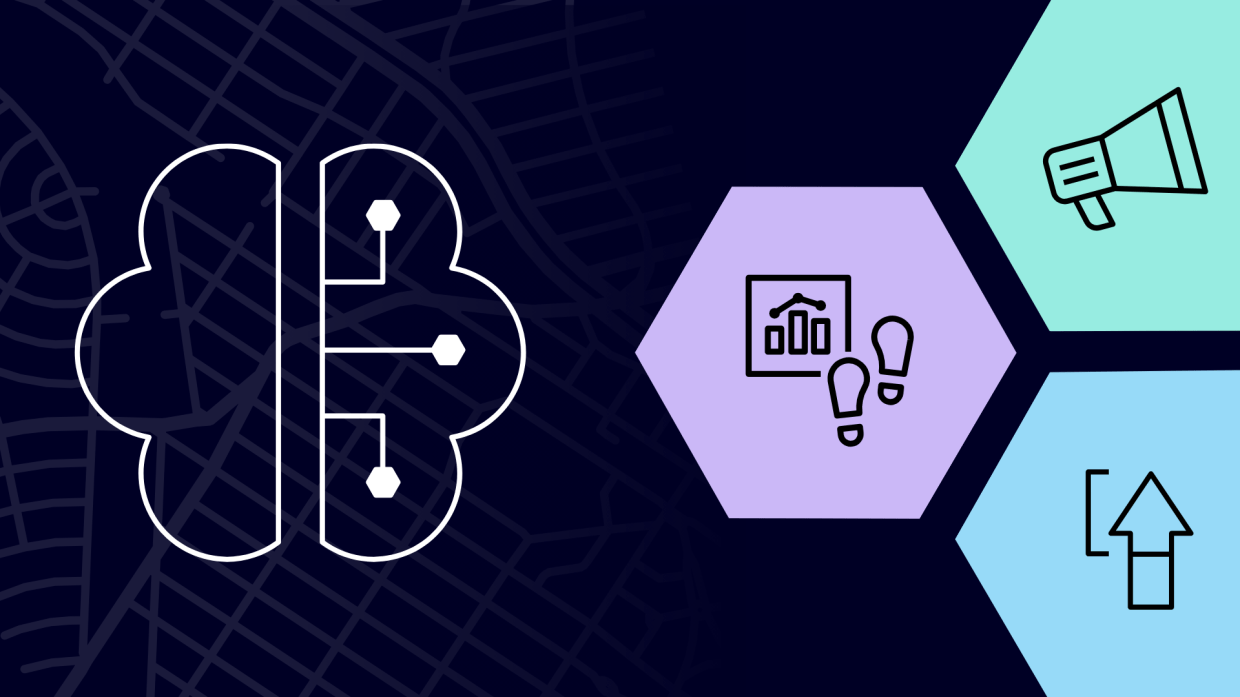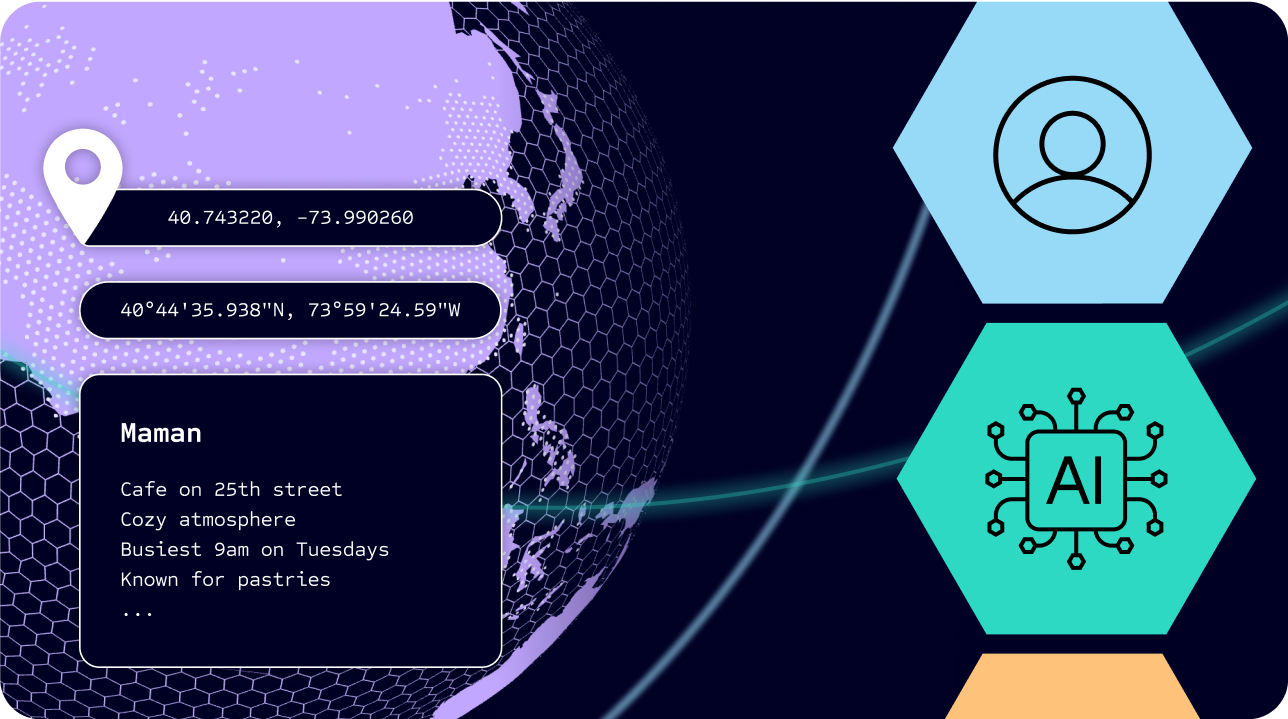GeoAI…machine learning…artificial intelligence—these terms have become more than just buzzwords in recent years; they represent a transformative shift in how industries operate. But what exactly is GeoAI? How is ML/AI related? And why is it becoming so crucial for retailers aiming to stay competitive in an ever-evolving market?
GeoAI, or geospatial artificial intelligence, is a fusion of artificial intelligence (AI) with geospatial data, science and technology, revolutionizing how we understand and navigate the complexities of the real world. By applying advanced machine learning (ML) techniques to spatial data—ranging from satellite imagery to text and video—GeoAI uncovers hidden patterns, relationships, and anomalies that would otherwise go unnoticed. This powerful tool is not just about mapping; it’s about transforming vast geospatial datasets into actionable insights that can fuel predictive modeling, drive automated decision-making, and reshape business strategies. As GeoAI reduces manually labor-intensive processes, retailers can now focus on interpreting and actioning against the results, streamlining data analysis and accelerating productivity.
Let’s explore how GeoAI can enhance key business functions to drive innovation and gain a competitive edge in the retail industry.
Reinventing Retail with GeoAI
The global market for AI in retail, which includes GeoAI, is projected to reach $31.18 billion by 2028. This significant growth underscores the increasing importance of advanced technologies in shaping the future of retail. GeoAI is becoming a critical tool for retailers aiming to stay at the forefront of this transformation, enabling them to analyze and leverage spatial data in ways that were once previously unimaginable.
Strategic Site Selection
Choosing the right location for new stores or distribution centers is crucial for retail success. GeoAI enhances site selection by analyzing a range of factors, including demographic data, traffic patterns, and competitor locations. AI models can then use this data to predict future growth trends, consumer behavior, and market saturation. By integrating these insights, retailers can confidently identify optimal locations that maximize foot traffic, minimize competition, and align with their target market’s preferences, resulting in more informed and strategic site selection decisions.
For example, if a computer and electronics retailer wants to expand into a new metropolitan area, GeoAI can pinpoint neighborhoods with high concentrations of tech enthusiasts and assess visitation patterns to find high-foot-traffic locations. It can also identify the concentration of complementary retailers like electronic repair shops and gaming stores, or uncover areas with fewer competing electronics stores to minimize market saturation. By integrating these insights, GeoAI helps the retailer select optimal locations that attract more customers and align with current market trends.
Personalized In-App Experiences
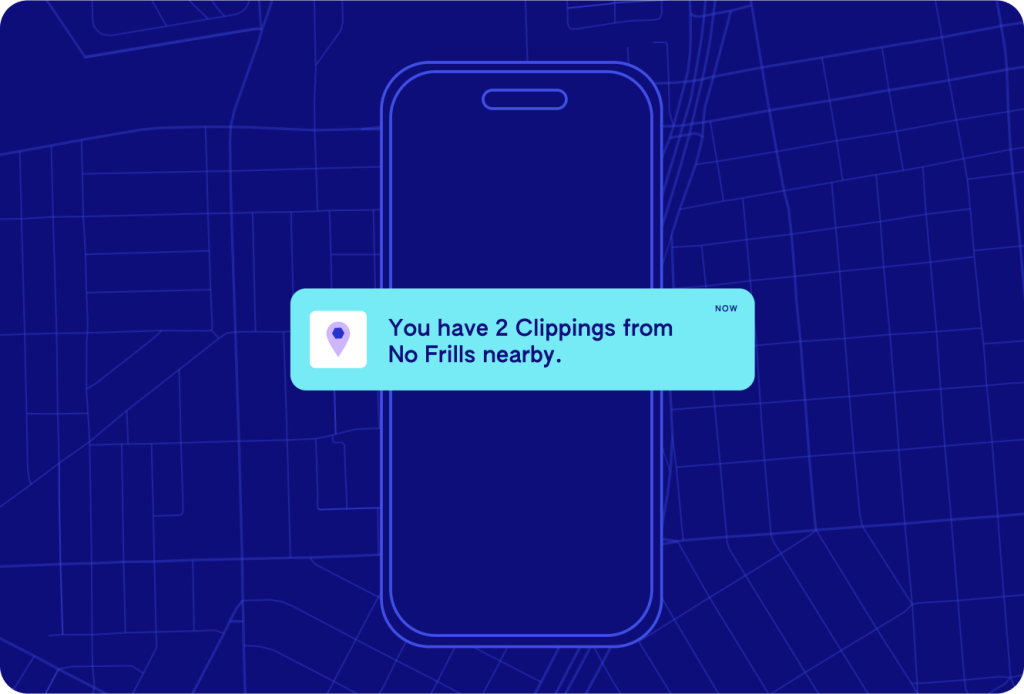
As mobile apps continue to be a driving force of sales and customer engagement – with shoppers viewing 286% more products and adding items to their cart 90% more often than mobile browsing – retailers must focus on enhancing their in-app experiences by streamlining the purchasing process and providing personalized and relevant content that resonates with their customers’ preferences and needs.
For example, a GeoAI model that’s integrated into a retail app could take into account a customer’s frequent visits to specialty gyms and workout classes to provide personalized suggestions to shop new workout clothes, fitness trackers, or supplements, catering to their fitness-focused lifestyle. By using real-time location data and behavioral insights, retailers can deliver more relevant recommendations that align with customer’s interests, enhancing their shopping experience and driving higher engagement.
Location-Based Marketing Campaigns
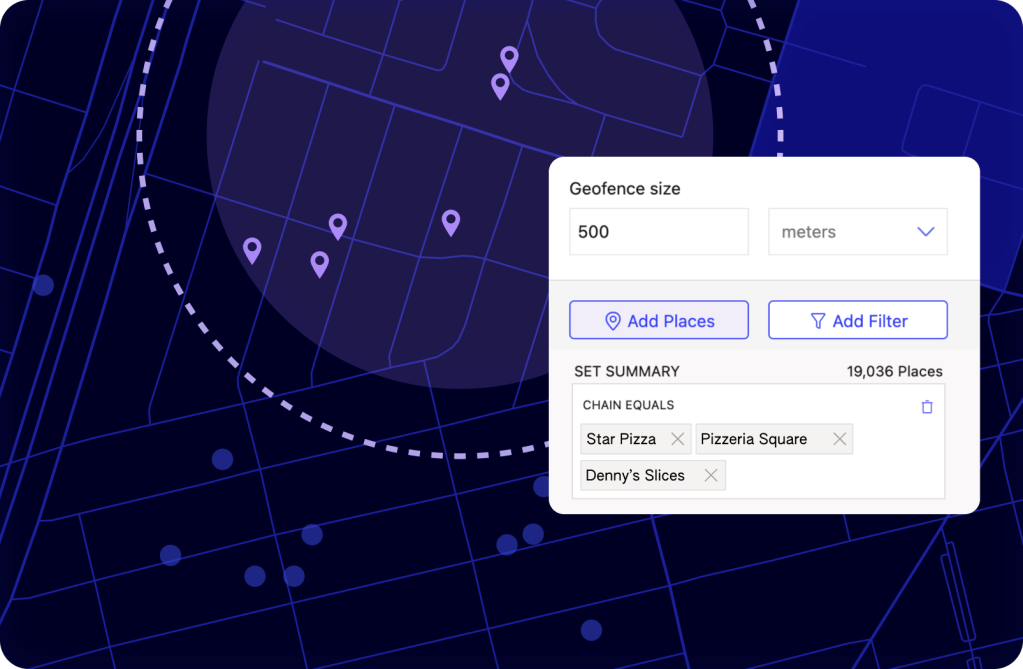
Personalization is key to effective marketing in today’s competitive retail landscape. GeoAI enables retailers to build more effective strategies to tailor location-based marketing campaigns based on geospatial data and customer behavior. With automated GeoAI systems analyzing this data, retailers can quickly gain insights to improve audience segmentation and targeting, optimize ad placements, and deliver relevant offers to customers at the right time and place, increasing the likelihood of online and offline conversions.
For example, consider a luxury jewelry retailer preparing for the holiday season. Using GeoAI, the retailer analyzes data from past holiday sales and current foot traffic patterns to pinpoint high-traffic areas where affluent shoppers are most likely to be: upscale shopping districts, fine dining restaurants, luxury vacation spots, etc. Through digital ads, geo-targeted promotions, or location-based notifications, retailers can reach their key target market in optimal moments of receptivity, offering limited-time holiday discounts or personalized invitations to exclusive in-store events. This targeted approach helps retailers cut through the holiday noise and drive higher sales during the peak shopping season.
Improving Supply Chain Efficiency & Sustainability
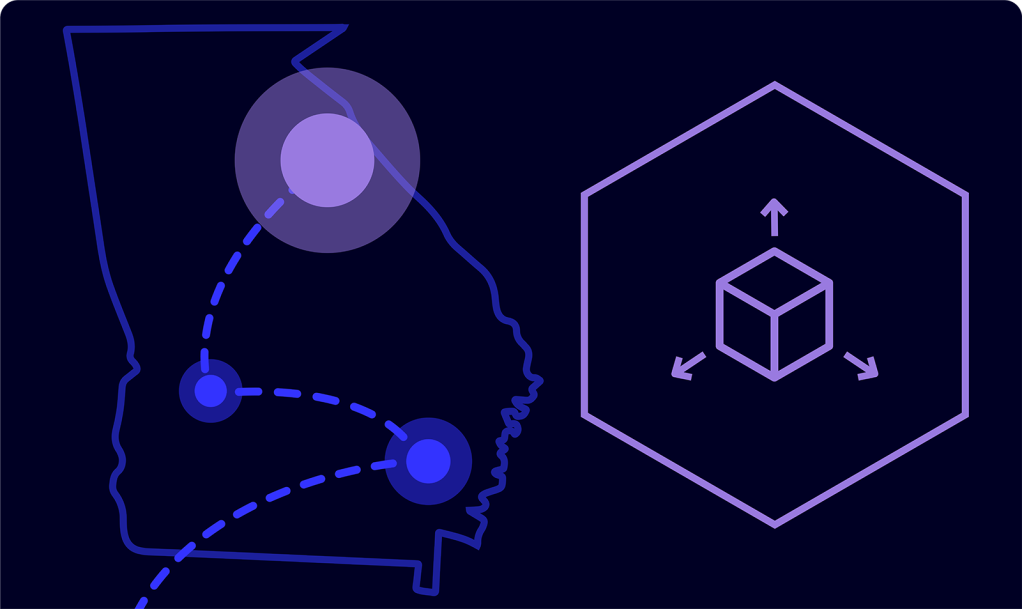
Effective supply chain management is essential for meeting customer demands and minimizing operational costs. GeoAI helps retailers optimize their supply chains by analyzing transportation routes, weather data, delivery patterns, regional demand, and more. By identifying the most efficient routes and predicting potential disruptions, retailers can reduce delivery times and costs, ensuring that products reach customers in a timely manner.
For instance, GeoAI models could be used to identify a severe weather forecast affecting certain delivery routes. It can then automatically reroute trucks to avoid delays and ensure timely deliveries of perishable goods. Another example, if GeoAI models detect that a particular store experiences peak shopping hours in the late afternoon, it can schedule deliveries to arrive early in the day to ensure that fresh items are stocked and available before the rush.
An additional benefit of improving supply chain management for retailers is reducing their carbon footprint and meeting sustainability or ESG (Environmental, Social, and Governance) goals. GeoAI can be leveraged to find optimal traffic routes that reduce fuel consumption and minimize emissions. Moreover, GeoAI can reveal potential risks or ethical and environmental concerns within the supply chain by analyzing crucial data points, such as audit reports, geographic sourcing of products and materials, or energy consumption patterns. Up to 90% of a business’s greenhouse gas emissions can stem from its supply chain – when you couple that with increasing sustainability regulations and consumer expectations, GeoAI offers a powerful tool for improving retailers’ sustainability practices.
Forecasting Market Trends
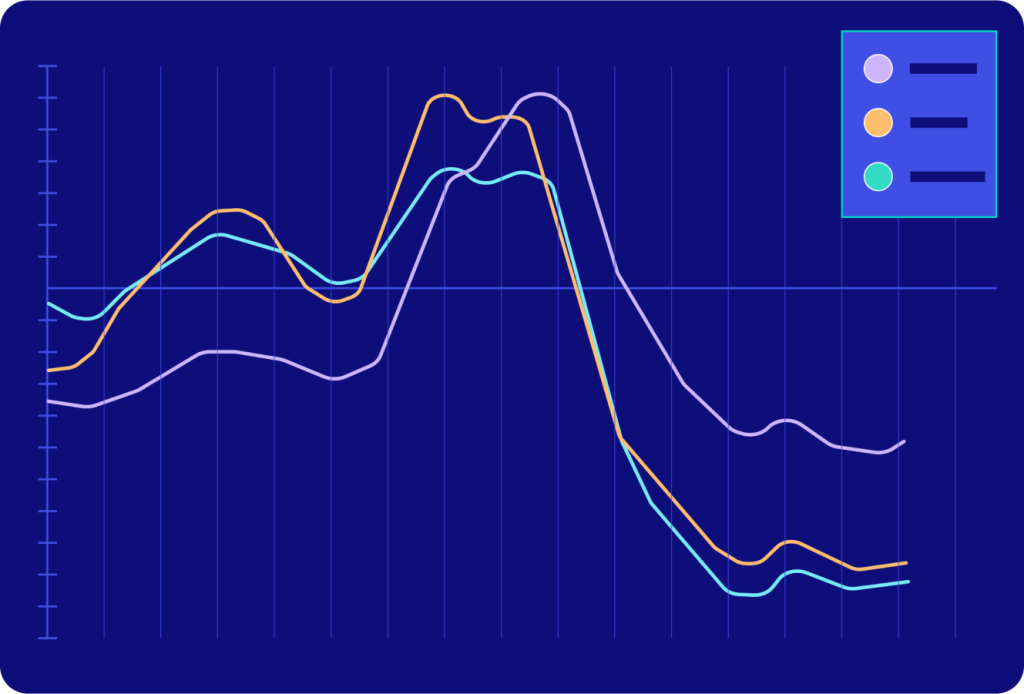
Retailers can leverage GeoAI to forecast regional demand trends by analyzing historical sales data, demographic information, and real-time location data, while also gaining insights into emerging trends, such as shifts in consumer behavior and local market dynamics.
For example, a fashion retailer could use GeoAI to anticipate seasonal trends in different regions by analyzing past transaction data, demographic profiles, and current fashion trends, helping to predict which styles and products will be popular in each area. This foresight allows the retailer to adjust their inventory strategy in advance, ensuring that stores are stocked with the most in-demand items for each locality.
Furthermore, GeoAI can identify patterns such as growing interest in certain product categories or demographic shifts that might influence purchasing behavior. For instance, if the model detects an increasing trend for eco-friendly fashion in urban areas, the retailer can prioritize these products in cities where the demand is rising. Overall, GeoAI empowers retailers with essential tools to anticipate and respond to market trends, enhancing their ability to meet customer demands efficiently and stay ahead of the competition.
Integration of GeoAI with Current & Emerging Technologies
Now that we’ve gone through some key use cases, it’s time to dive deeper into how GeoAI is integrating with existing and emerging technologies. The cohesiveness of these advancements not only improves the use of current systems but also amplifies the impact of emerging technologies, driving innovation and efficiency in retail.
Integrating with current tools
GeoAI is increasingly being integrated with a wide range of tools and technologies that retailers already rely on, such as Geographic Information Systems (GIS), Customer Relationship Management (CRM) platforms, and marketing automation tools. These technologies are key to implementing the use cases discussed earlier—such as precise targeting and strategic site selection—by providing the necessary infrastructure and data integration.
In addition, many location intelligence partners may already be leveraging GeoAI behind the scenes to enhance their products, providing you with advanced capabilities without requiring additional effort on your part. For example, Foursquare leverages GeoAI within our proprietary Attribution models to allow attributed changes in visit behavior to specific events, such as exposure to ad campaigns. Models like these allow retailers worldwide to harness highly accurate location-based products for teams across the organization, including:
- marketers – Attribution, Audience, Proximity;
- developers and data analysts – Places API; or
- any team looking for mapping or data visualization capabilities – Studio.
Emerging Technologies
In an era of rapid technological growth and continuous innovation, retailers are also tapping into new emerging technologies to create more personalized, interactive, and seamless experiences for their customers. With the incorporation of GeoAI, these emerging technologies are becoming even more powerful, spanning location intelligence sectors and beyond. For example:
Drones and aerial imagery are essential tools for disaster management by providing high-resolution images of retail buildings and their surroundings. When combined with GeoAI, these technologies enable retailers to effectively assess and address risks at scale. For example, GeoAI can help identify overgrown vegetation that may increase wildfire hazards or detect damage on roofs, allowing for timely interventions and risk mitigation across all of their commercial properties – and in a fraction of the time it would take manual inspectors.
Augmented Reality (AR) and Virtual Reality (VR) can be used to offer immersive shopping experiences, enabling customers to visualize products in their own environment or navigate virtual store layouts. GeoAI can integrate real-time geospatial data, such as heat maps of customer dwell times, to create personalized navigation and interactive promotions.
Blockchain enhances supply chain transparency by providing a secure and tamper-proof ledger of product origins and movements. When combined with GeoAI, retailers are able to track products across the supply chain with precise geographic data, ensuring ethical sourcing and compliance.
Generative AI (GenAI) can be utilized to design and optimize various aspects of retail operations. For instance, it can create personalized marketing content or design new products based on geographic customer data and behavior insights from GeoAI, leading to more effective and targeted strategies.
By integrating these emerging technologies with GeoAI, retailers can leverage advanced capabilities to transform their operations, drive innovation, and deliver exceptional customer experiences.
Embracing GeoAI and Technological Innovation in Retail
As the retail industry continues to evolve, integrating GeoAI into business strategies will be crucial for staying ahead of the curve. By harnessing the power of geospatial data and artificial intelligence, retailers can make data-driven decisions with speed and precision, enhance operational efficiency, and achieve a sustainable competitive advantage.
For retailers ready to embark on this transformative journey, the next steps involve evaluating your current in-house capabilities, investing in the right technologies for your specific use cases, and fostering a culture of innovation by embracing change. In doing so, you can unlock the full potential of GeoAI to redefine your operations, delight your customers, and lead the way into the future of retail.
Power your business with GeoAI powered location intelligence
Authored by: Summer Slough
